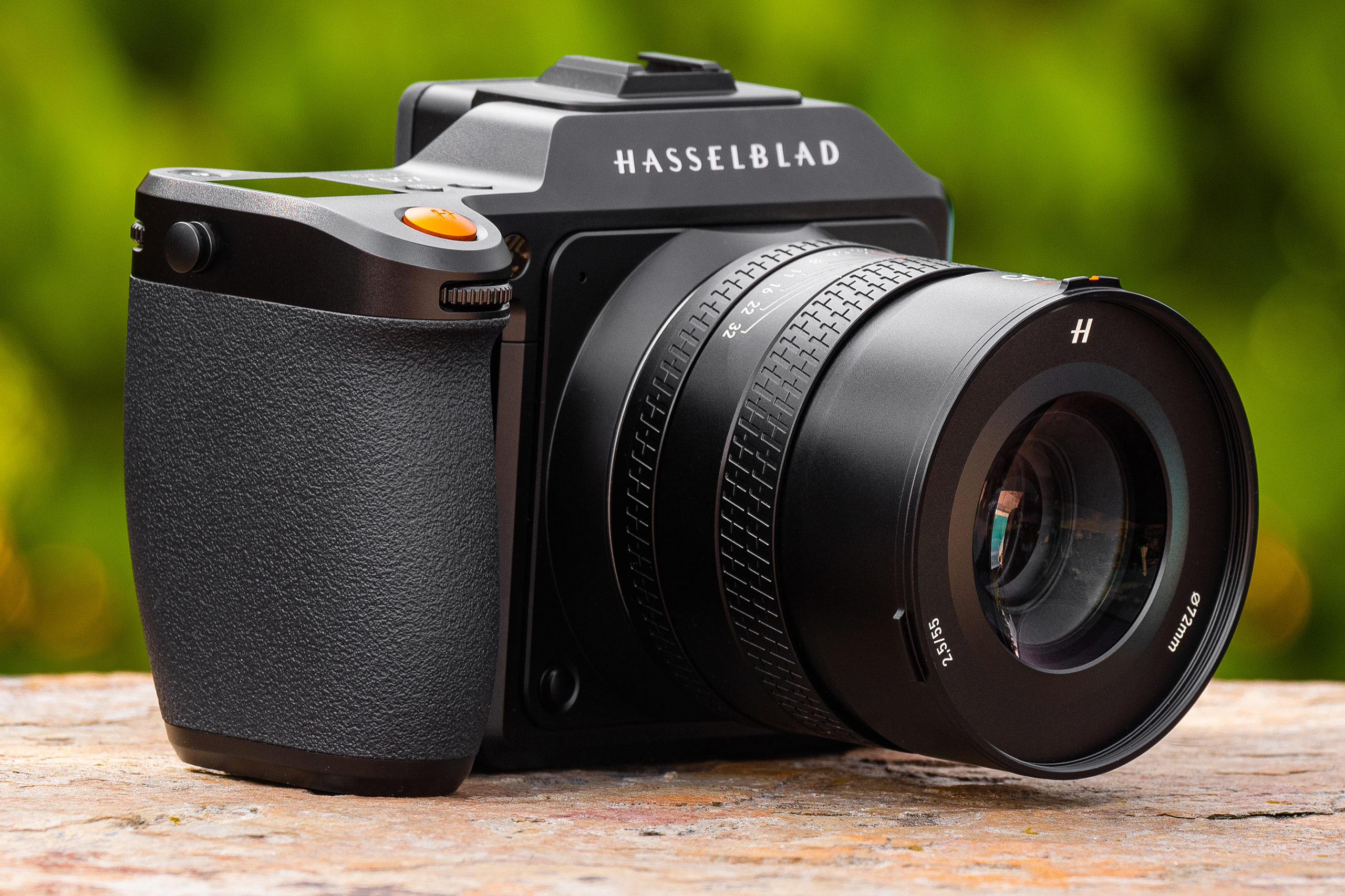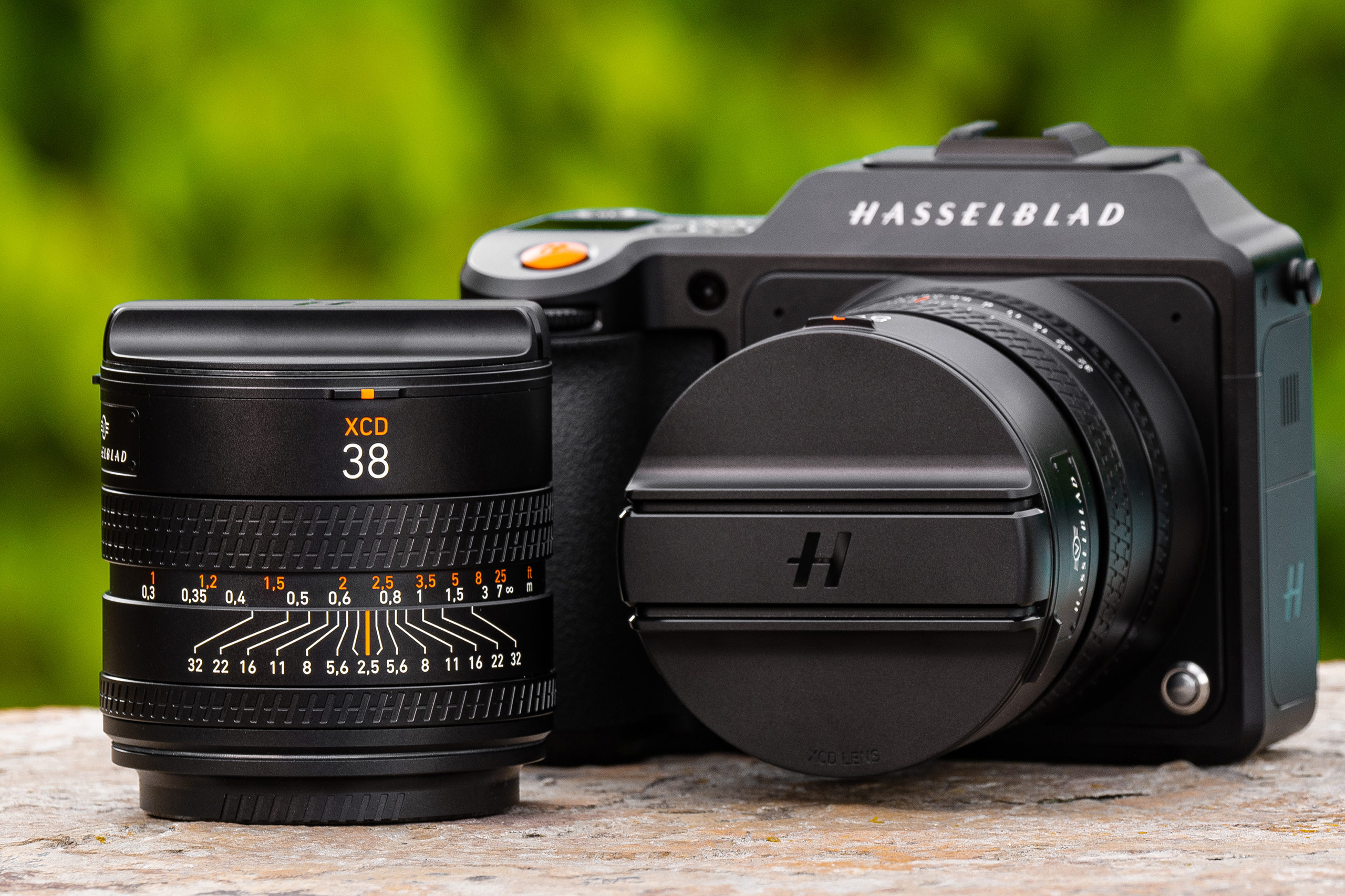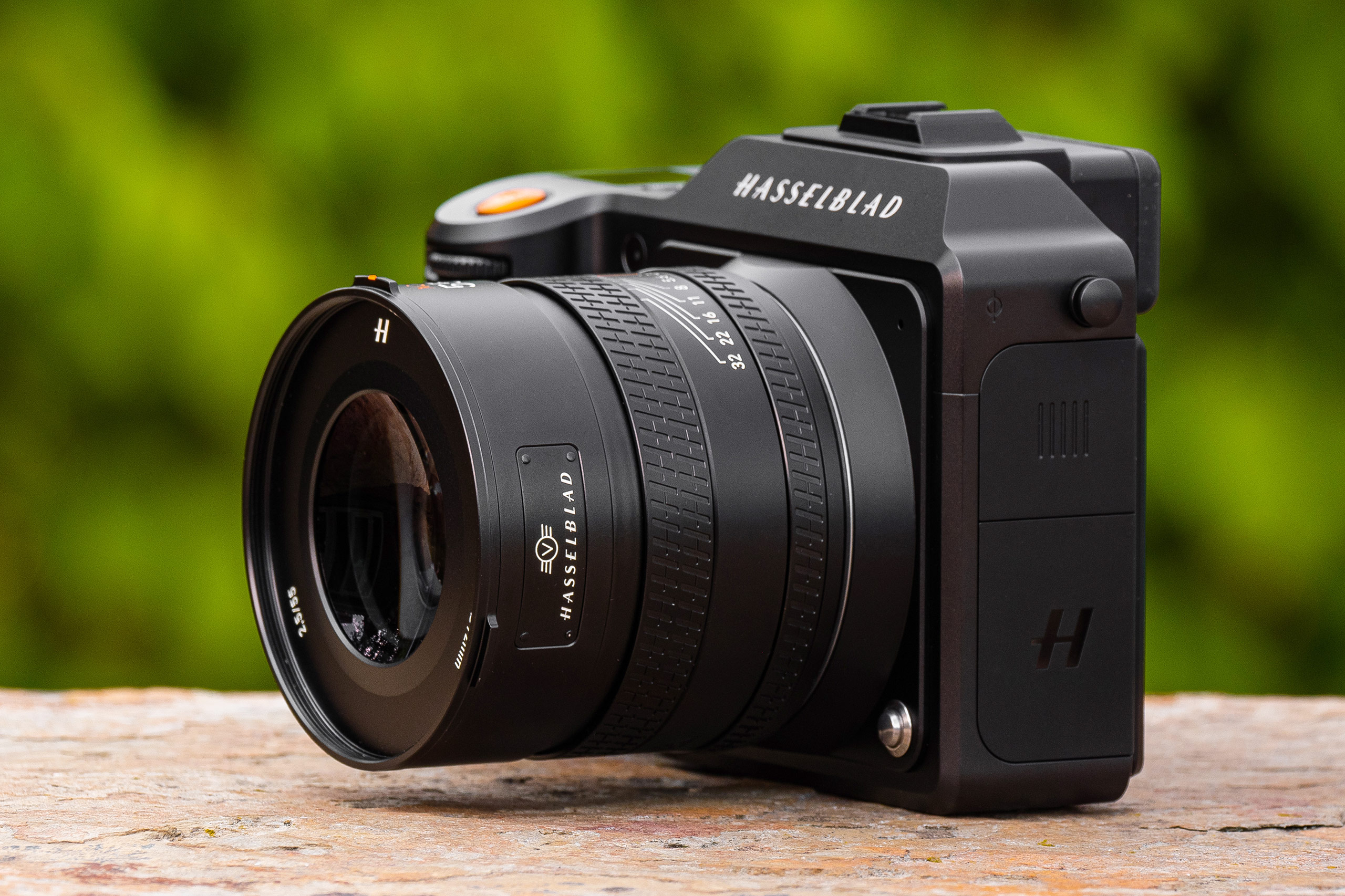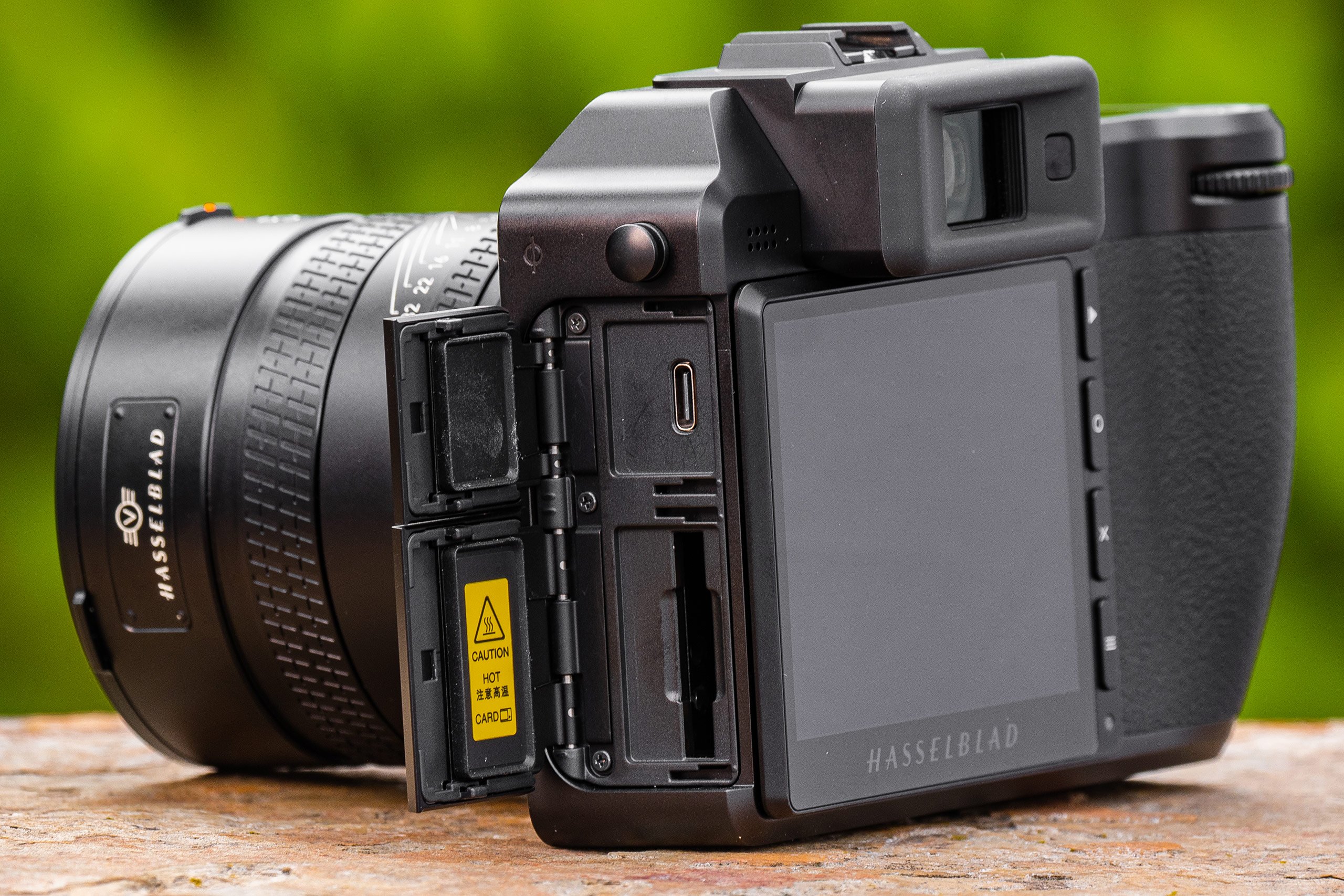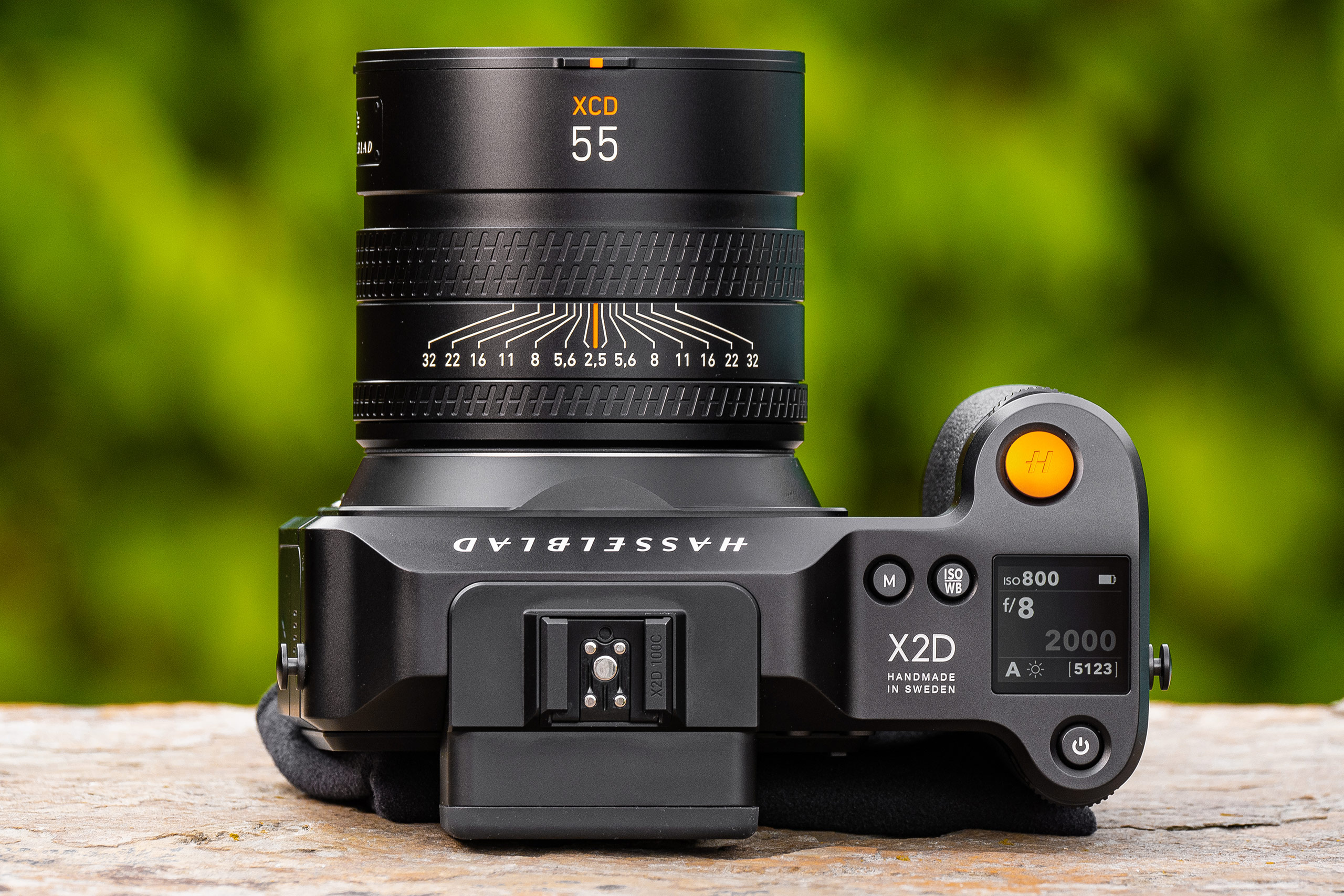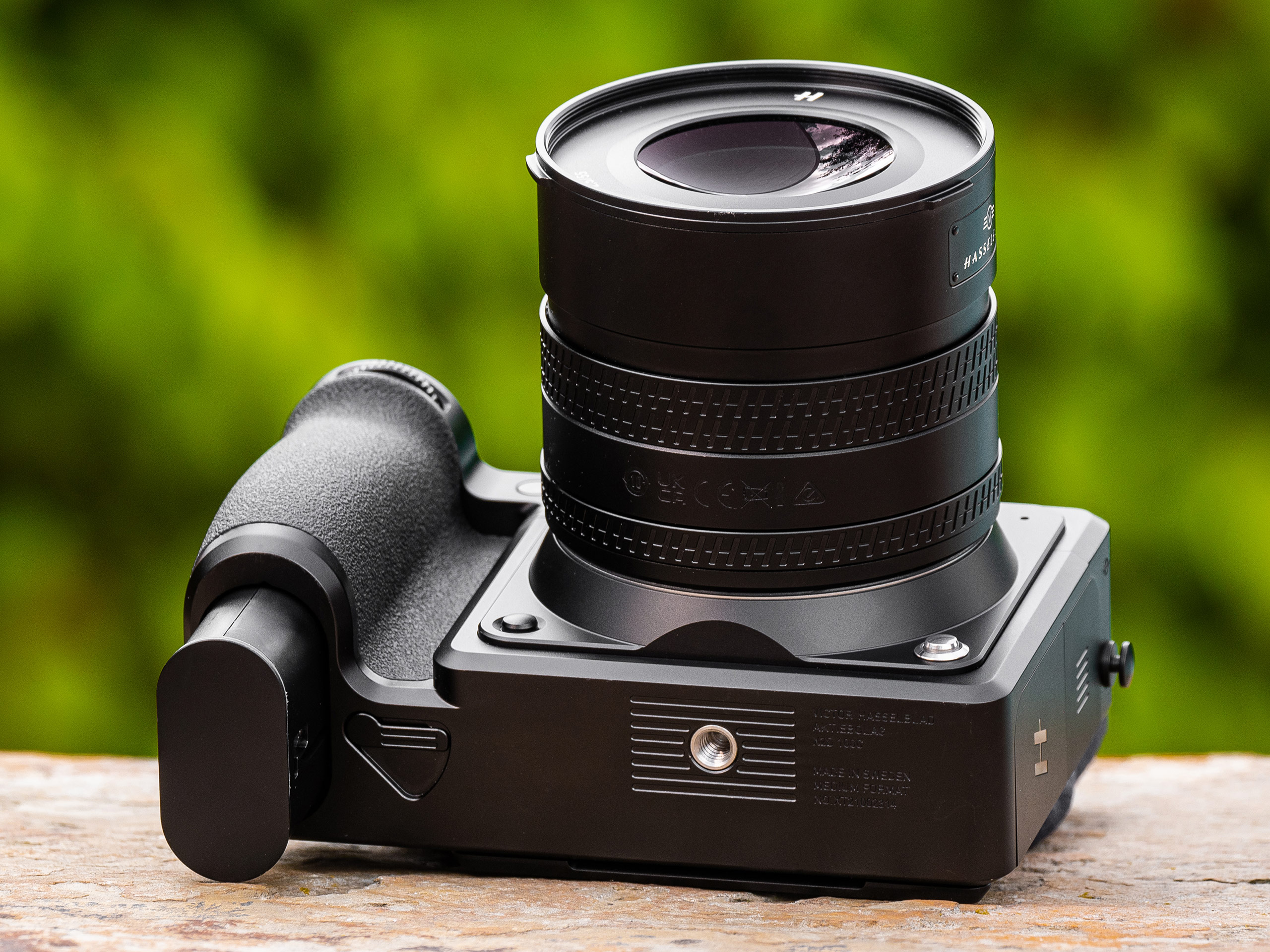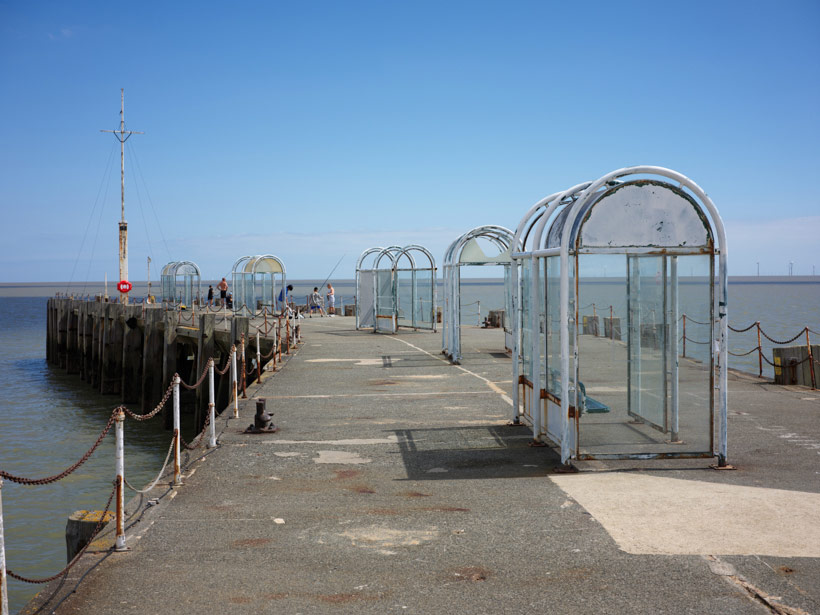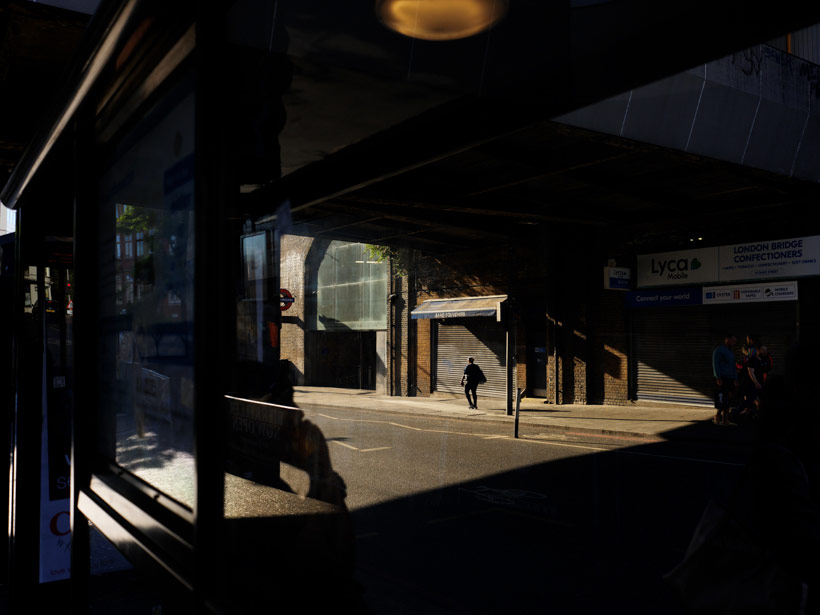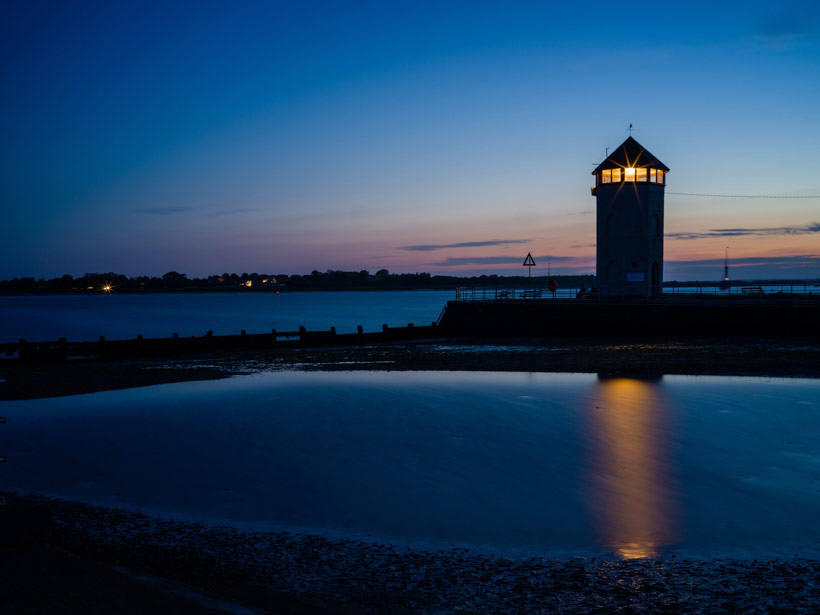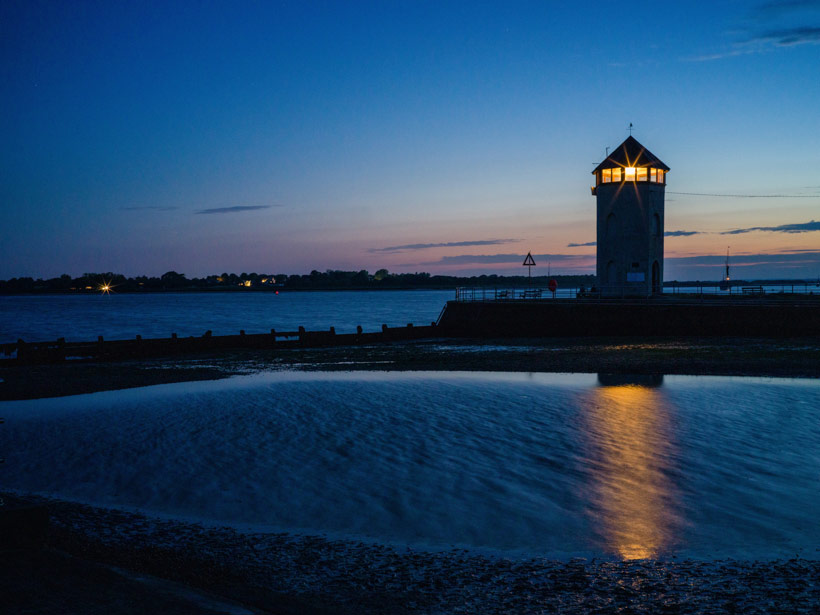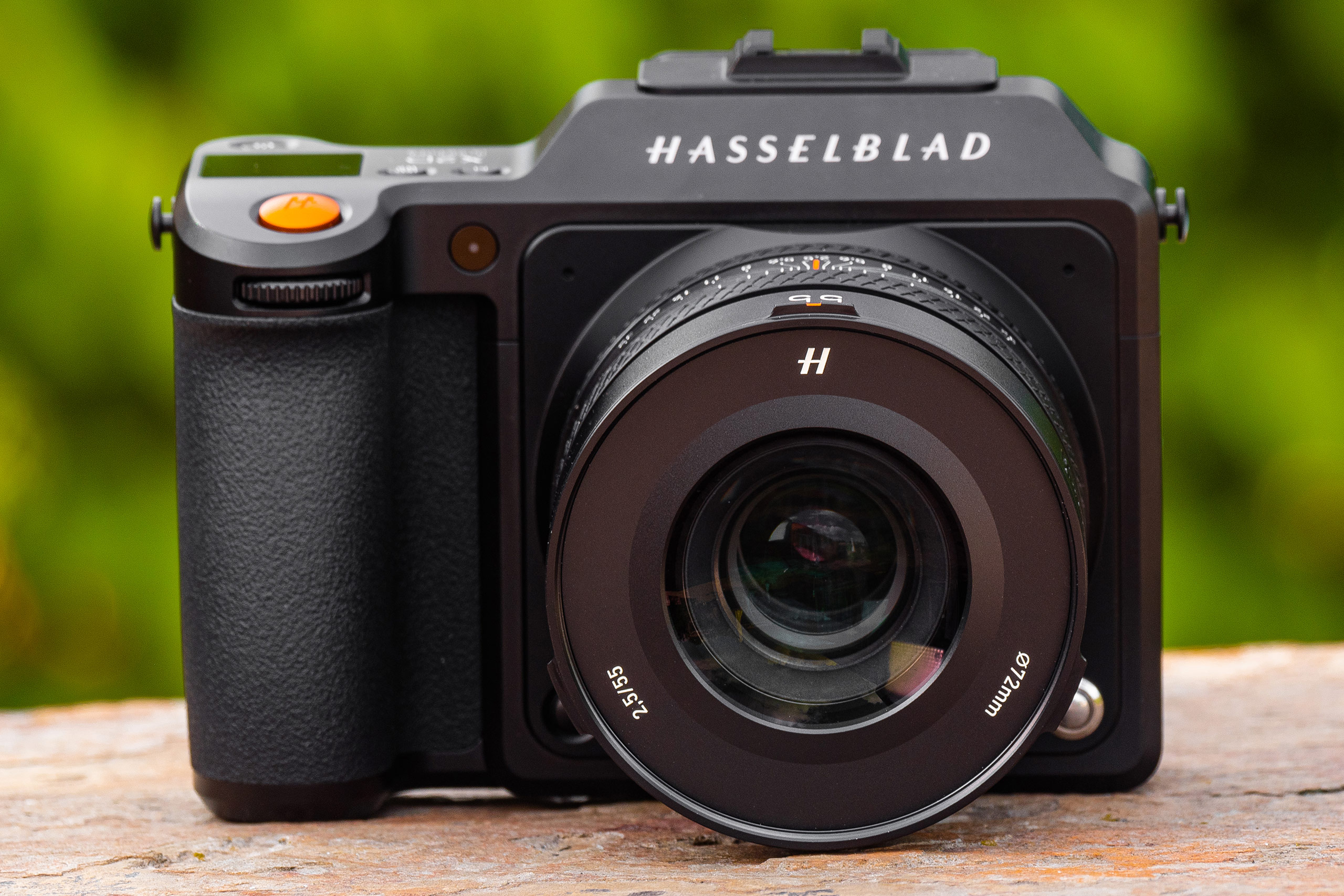Björn Again – The Hasselblad X2D 100C brings a faster processor, phase detection AF and a new 100MP sensor giving the Hasselblad X series cameras a whole new lease of life, says Damien Demolder.
The digital age has proven quite challenging for a lot of photographic companies, especially for those from a medium format background. Big sensors and a market a fraction of the size of the mainstream made it a very expensive business, and while many went to the wall Hasselblad has hung on.
After a long and pretty dark winter for the Swedish firm, Spring sprung in 2016 when it launched the Hasselblad X1D 50C. This small, highly portable and relatively lightweight camera marked quite a diversion from the company’s H series of studio models and, with a price that was attractive at the time, the fortunes of this historic brand were miraculously transformed. Demand exceeded capacity for supply, order books were once again full and a wealthy investor was delivered by drone to inject funds that allowed the necessary expansion.
The X1D 50C wasn’t fastest gun in town and offered a great deal of room for improvement, but with time the updated X1D II 50C increased reactions and went some way towards making it a modern performer.
This latest model though, the X2D 100C, promises to bring the series right up to date with faster processing, faster AF and a whole new user experience. It also has double the pixel count, and some other quite surprising new features – including the beginning of a new series of lenses called XCD V.
At A Glance
- £7369 body only
- 102MP 43.8×32.9mm sensor
- 7-Stop IBIS
- 1TB internal memory
- Phase detection AF
- 5.76m-dot OLED viewfinder
- 3.6in tilting touchscreen
Hasselblad X2D 100C Features
The headlines around the Hasselblad X2D 100C will focus on its new 100-million-pixel sensor – higher resolution than any full-frame camera, and matching its closest competitor, the Fujifilm GFX100S. It is indeed impressive by any standards, but in a world where 50MP is more than enough for most things, I’m not sure it’s the most important detail of the new model’s specification.
What matters more is that the new sensor has phase detection AF, that it is back-illuminated to keep image noise at bay, and that it sits on a 5-axis in-body image stabilisation system that offers us 7 stops of anti-shake compensation. As before, a sensor measuring 43.8×32.9mm counts as ‘medium format’, but even at that size it brings a number of advantages over regular full frame sensors for depth-of-field control and light gathering ability.
Images from this sensor are actually made with almost 102 photodiodes and measure 11656×8742 pixels, with RAW files taking up 206MB of disk space and JPEGs using between 60 and 90MB, depending on the content.
Hasselblad takes the edge off the pain of saving such large files by giving us a built-in 1TB SSD with a capacity to hold over 5000 RAW files or about 16,000 JPEG images. The idea here is to make sure we have memory with extremely high read and write speeds, so the camera doesn’t become clogged up with unsaved data. The SSD writes at 2370MB/s, and we have a 10GB/s USB 3.2 Gen 2 port with which to get the files out of the camera later. If you don’t want to use the SSD, or you fill it up, you can always resort to the CFexpress Type B slot that can handle cards of up to 512GB.
Other key aspects around the new sensor are that we have the choice to shoot in 14 or 16-bit colour, and that Hasselblad says that in 16-bit we can expect 15-stops of dynamic range. This 16-bit mode slows the camera, but in 14-bit we should be able to achieve 3.3fps.
The adoption of phase detection focusing is another major change for the system. The sensor uses 294 phase detection points that between them cover 97% of the sensor. These combine with a new processor running the camera that, we are told, has increased the speed of the AF by 66% over the system in the X1D II 50C. The new XCD V lenses also help with AF speed, as Hasselblad claims they are 3x faster than the existing XCD series.
Notable omissions include focus bracketing, XPan aspect ratio and the ability to shoot video. The former will be installed later via a firmware update, but Hasselblad says it has no plans to add video in the near future.
Focal Points:
- Sensor – The new 43.8×32.9mm sensor produces images measuring 11,656×8742 pixels, uses 294 phase detection points and has an IBIS system that is claimed to offer 7-stops of stabilisation
- Internal Memory – We don’t often see a digital camera with internal memory, but the Hasselblad X2D 100C comes with 1TB of storage in the form of a fast read/write SSD
- Flip Up Screen – The rear LCD on the camera is actually the same 2.36-million-dot model we saw on the X1D II 50C but now it comes with a hinge so it can be flipped up into two positions – 40° or 70°
- 1x EVF – The new EVF uses a high resolution 5.76-million-pixel panel that refreshes at a rate of 60fps. The magnification through the finder is 1x, so the view is big, clear and very easy to use
- New Lens System – Hasselblad has introduced three new lenses that make the most of the speed of the X2D 100C – the XCD 2,5/38V, XCD 2,5/38V and XCD 2,5/90V. The lenses have a completely new design with manual focus clutch control, a focus scale and a 3x faster AF system
- Flash – As before, the Hasselblad X system is compatible with Nikon flashes, which can be controlled directly through the camera’s menu system
Hasselblad X2D 100C Build and Handling
I have to say that I rather liked the pop-up mode dial on the original Hasselblad X1D and was slightly disappointed to see that it had been replaced by an information panel. At least, I was disappointed at first, but realised quite quickly that I rarely change exposure modes and had less use for a theatrical knob than I’d like to admit.
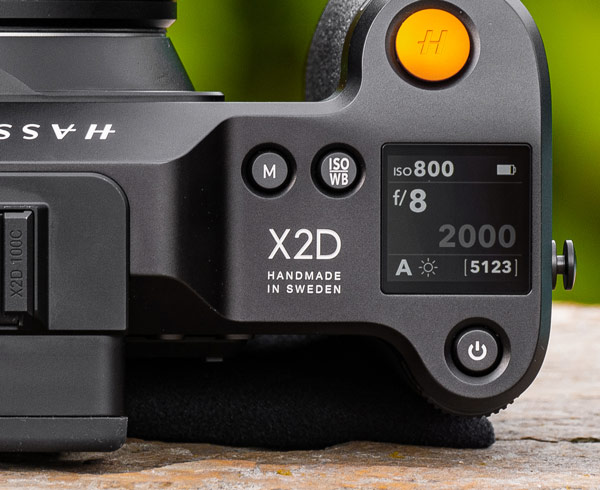
Hasselblad X2D 100C camera top control panel and screen, photo: Damien Demolder
The new information panel on the top plate of the Hasselblad X2D 100C is a good deal more useful, and I found I referred to it a lot while using the camera. It’s bright and clear, its icons are large and it neatly shows me all the things I need to know at a glance. It’s collection of type styles and font shades also makes it a pleasure to look at while differentiating the areas of information so that we find what we are looking for very quickly. I like too that a quick press of the on/off button triggers a battery-level display so we can check our power without having to wait for the camera to start up.
Not that waiting for the camera to start up is much of a drag anymore, as everything about this camera is very much quicker than it was in the previous models. From pressing the button to the shutter firing takes less than two seconds. That might seem an eternity to many photographers, but in medium format land that’s pretty good.
In use the camera is really very comfortable to hold and to operate. It has a big grip for the right hand that lends us plenty of purchase for both thumb and fingers, so we never need to feel as though we are going to drop it. The camera is as heavy as you’d expect a big metal body to be, but the weight is nicely balanced so that in two-handed use it doesn’t feel cumbersome at all. The body is extremely well made, and on the whole, the X2D really is a joy to operate.
The menu is slightly streamlined since the previous incarnation of the camera and the tab that switched between stills, video and settings has been done away with – without video it would be somewhat redundant, I suppose. Otherwise we have the same icon-based menu system as before, but that now responds a good deal more quickly. Like anything, we need to find out where everything is, but on the whole Hasselblad has given us a very straightforward and simple system. A few buttons can be customised and of course we can alter the function of the control ring on the new XCD V lenses.
Although I liked the idea of the sensational amount of internal storage this camera offers, I wasn’t sure how I’d feel using it instead of removable cards. But I found quickly that I rather liked it. It certainly allayed my constant fear of getting to a job with no memory cards, and the 1TB capacity is so much more than just a token gesture that you’ll actually never have to pander to the expensive tastes of the CFexpress card slot.
Getting the images off the camera requires that there’s some life left in the battery as we need to switch the camera on and interact with the rear screen – as well as maintain power until all the images are copied over. Although the camera plugs in via the same USB port that charges the camera, there’s no charge going to the camera during image transfer.
Hasselblad X2D 100C Viewfinder and Screen
Being a big fan of shooting from a rear screen I was very pleased to see we now have a hinged panel that can flip up for low-angled shooting. It is well designed from a ruggedness and durability perspective, so the hinge and the connections between the screen and the body don’t feel like points vulnerable to damage.
In the desire to avoid this being a weakness however, Hasselblad has made the screen very difficult to use in the flipped-up position. The top length of the screen stays attached to the back of the body and when flipped up a really quite significant section of our composition will be obscured by the rather bulbous EVF housing. It’s pretty unfortunate actually, and I found that when shooting from a low angle so much of the frame is covered that I wasn’t confident enough to press the shutter release.
Other designs deal with this issue by allowing the screen to pull away from the body. As someone who likes to shoot in portrait orientation, I was also a bit disappointed that the screen doesn’t flip up from the side. It’s not nearly as useful as the three-way tilting screen on Fujifilm GFX100S, and in the end, I used the flip-up function far less than I would have liked.
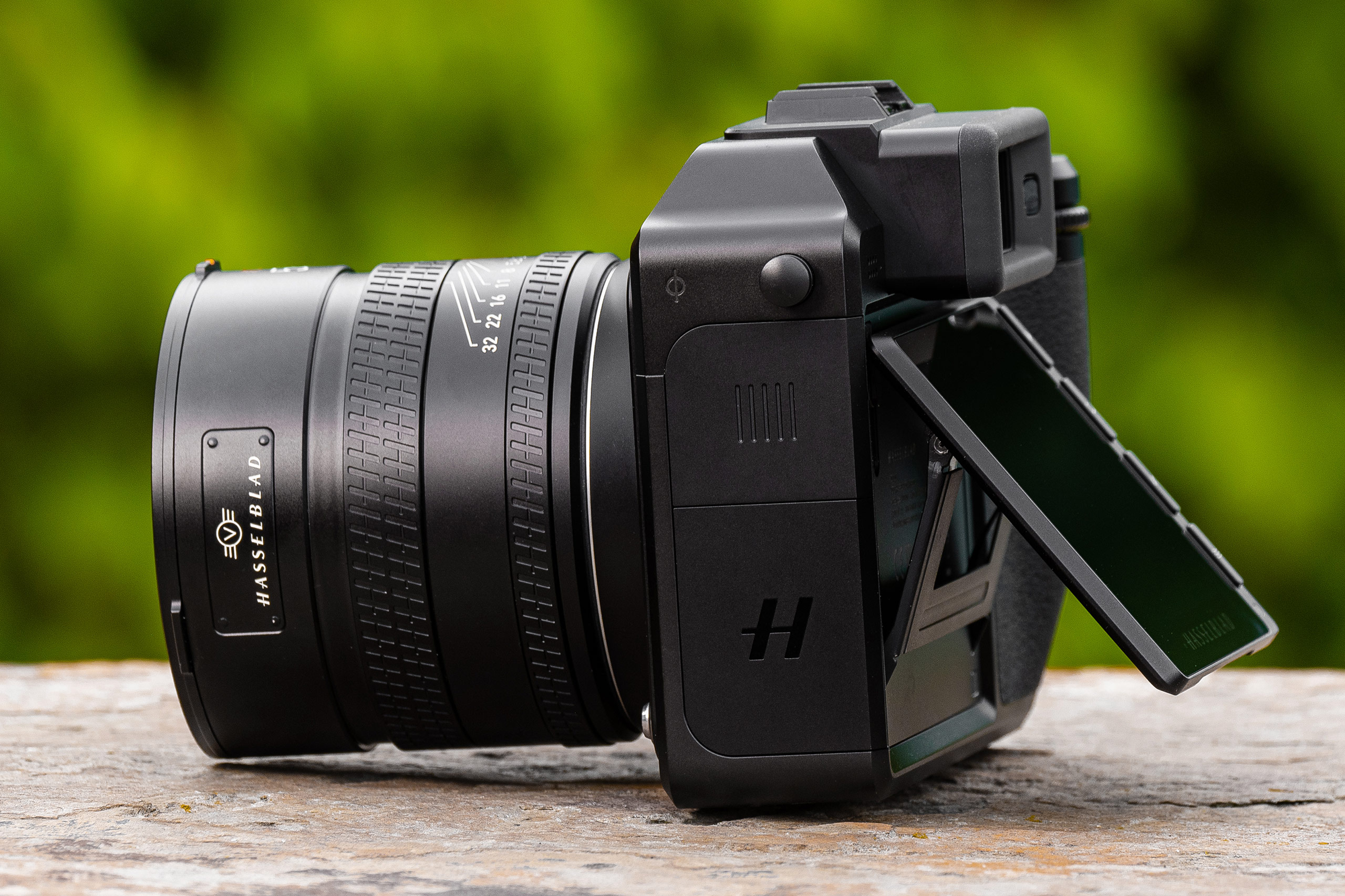
The Hasselblad X2D 100C screen is blocked by the viewfinder when tilting the screen up. Photo: Damien Demolder
The new larger and clearer 5.76-million-dot EVF though almost makes up for the flip-screen disappointment, and in fact a knock-on effect of the obstruction of the rear screen was that I used the EVF much more than I would normally.
Glasses wearers will have to adjust as best they can, because the eye-relief of the 1x magnification finder didn’t quite allow me to see the whole screen at once. But with my glasses off, I was able to get the dioptre adjustment close enough that I could judge my images. I also found that with glasses on, the eye-sensor didn’t always recognise my presence as well as I’d like and that my nose was prone to touching the rear screen and shifting my focus position. Without glasses I could tuck my nose around the side of the camera and find a very comfortable shooting position.
The camera has no physical dioptre control dial as this is now handled via the menu system. On demand the EVF screen displays the name Victor at different sizes, and we use the main control wheels to electronically adjust the dioptre until the words appear sharp. It’s pretty cool!
It is possible to use the rear screen as a touch pad while the EVF is in use, so we can use a thumb to move the AF area, which is very handy. There is no joy-stick, so operating the menu via the EVF requires learning a pretty efficient turn-and-press routine with the finger wheels. It took me about ten minutes to get used to, and allowed me to adjust settings without having to take the camera from my eye.
Hasselblad X2D 100C Performance
The new processor, phase detection AF and the new XCD V lenses make this X2D 100C a completely different beast to the model that came before. It looks much the same, but the speed of operation is streets ahead in almost every measurable element.
Start-up times are dramatically reduced and the general reactions of the camera, from screen presses to dial turns, are very much more responsive, and the interval between a shutter button press and the picture being taken is impressively short.
There are no delays either between frames as the camera tucks the recorded files away to bed very quickly, and images just shot are shown on the rear screen or in the viewfinder without delay. In all, operation is a whole lot more slick than it is in the previous model.
This is not a sportsman’s camera though, and the maximum frame rate of 3.3fps in 14-bit colour mode is unlikely to impress anyone. In reality it is probably not going to deter likely buyers though, as I’m not sure anyone would expect a camera like this to have breath-taking high drive modes.
Having in-camera image stabilisation in a medium format camera is a treat and a great reassurance that we’ll be able to get the best from the sensor and lenses. Fujifilm has IBIS in its GFX models too, although Hasselblad claims its system provides more stability. I’ve been impressed with it, and found I could handhold, with some effort of my own, at shutter speeds as long as a second, and more casually well below what would normally be considered safe. I got very good hit rates with 1/8sec with the 55mm lens.
The camera’s metering system is reliable enough and I found that I needed to intervene less frequently than usual to get an exposure I liked. It took me a while to calibrate the rear screen to reflect the brightness of the RAW file on the PC screen, but I suspect that is partly down to the preproduction nature of the camera.
I never know what to expect from the batteries of cameras like this, but was pleased to find that despite all the new speed enhancements, or perhaps because of them, battery life isn’t too bad. Hasselblad says we should get 420 shots per charge, and while I’m not certain I got quite that many I did spend a lot of time with the camera on while walking around, and I reviewed my efforts at frequent intervals. As with most modern mirrorless cameras, you are going to have to budget for a spare battery.
Autofocus
The AF system of this series is transformed by the combination of three things – the addition of phase detection, the camera’s faster processer and the speed of the new lenses. The camera I was using only had a basic AF structure with few choices of AF configuration, and none of the face/eye detection that I’m told will come via a firmware update in the near future. Even in this state, I found it performed really rather well, for a medium format camera.
We shouldn’t expect to be able to shoot fast-moving action close to the lens, but you can’t do that with a Fujifilm GFX camera, either. More to the point, people walking quickly at a moderate distance are now game where they weren’t with the X1D II 50C. I was very pleasantly surprised at how well the camera handled street situations and how the new reactions allowed me to capture shots I couldn’t before.
In portrait situations the camera’s more decisive AF system makes a massive difference and we have much less hunting than before – hardly any at all, in fact. Switching to one of the original lenses I noted that while the performance is much improved over the same lens on the X1D II, to get the benefits of the new focusing system we need to use the new-style XCD V models. That will be hard to hear for those already invested in the system, but I suppose that’s the nature of progress.
At the moment the camera only offers AF-S mode with no continuous option, but I assume that will change with the firmware that introduces face detection.
Hasselblad X2D 100C Image quality
Once again I will point out that the camera I was using was not a production sample, but even so I’ve been impressed with the quality of the images it produces. I really like the more moderate nature of the colours and how they are so nicely balanced straight out of the camera. They saturate nicely in software when you want them to, and contrast can be played with dramatically, but we begin with a very nice natural-looking image. Having warmed up my mouse and calibrated my monitor I was a bit disappointed that I didn’t need to do very much to these files to make them look good.
Hasselblad’s Phocus software does a nicer job of processing these RAW files, and seems more in tune with the structure and colour characteristics of the pictures, but Adobe Camera RAW is a good deal more convenient to use. The occasional moiré patterning can be removed more easily with Phocus too.
In either package very bright tones that look lost to white miraculously reappear with a twitch of the highlight slider and shadows can easily be brought back to life. In fact, the dynamic range is such that it’s very easy to make an unrealistic looking image if you apply too much tonal recovery for the scene.
Noise performance is very good even though it wasn’t finalised in my camera and I was getting updates for the beta version of Phocus 3.7 while I was using it. While some texture is present in all images when you look closely enough, the 100MP files will need close inspection less often than images with fewer pixels. Noise becomes a noticeable part of the image at ISO 3200, but the noise structure is grain-like and not unattractive.
In JPEGs the in-camera noise reduction at higher ISO settings is a little over-enthusiastic for my liking, but it certainly produces a clean looking image, although sometimes tonal transitions that appear smooth without noise reduction become stepped when it is applied.
Resolution is exceptional of course, and the sensor and lenses combine to provide an extraordinary amount of detail from corner to corner. If you abide by the 300ppi printing standard you’ll find you get pretty astonishing 40x30in prints, though these days you can go much bigger than that.
Hasselblad X2D 100C Verdict
I liked the Hasselblad X1D II 50C a good deal, but it was the sort of camera you could only use for certain things – mostly static subjects. The X2D 100C is a dramatically more flexible machine that will happily tackle a much wider range of subjects, and with its transformed AF system will provide a much more satisfying experience as well as a more satisfying set of images.
This camera excels in so many areas in which the X1D II 50C just doesn’t, and with the new lenses fitted it becomes a whole new concept. We still aren’t talking about the sort of AF and system reactions we’d expect from a top-end full frame mirrorless camera, but for a medium format model this is top class.
Resolution, colour, sharpness and Hasselblad’s tonal rendition straight from the camera is also excellent, and the characteristic of high ISO noise performance, alongside that 7-stop IBIS, means we don’t have to think twice about leaving the tripod at home.
This isn’t a casual purchase for most of us, with the body costing almost £1900 more than the similarly sized and specified Fujifilm GFX100S. The new XCD V lenses, while generally faster than Fujifilm’s in aperture terms, also take the cost of ownership up significantly.
It’s as hard to talk about value for money when it comes to Hasselblad as it is with Leica, as logic and practical decisions can become intertwined with more abstract concepts. But if you have the money to spare, you probably won’t be disappointed. More firmware updates will flesh out the feature set and AF options in time, but even now the Hasselblad X2D 100C is an absolute delight to use.





